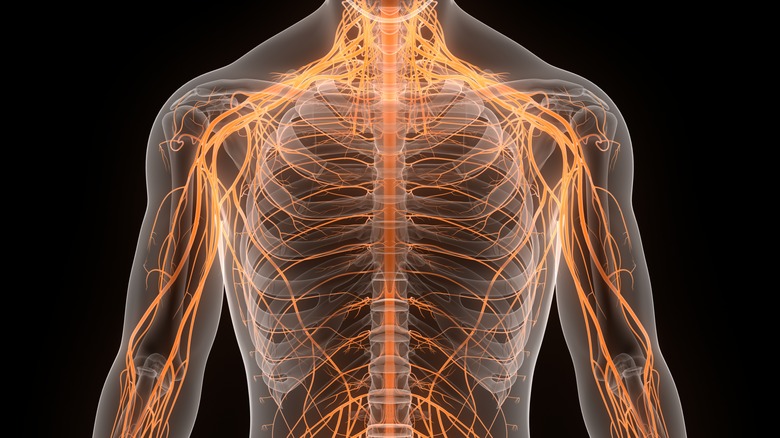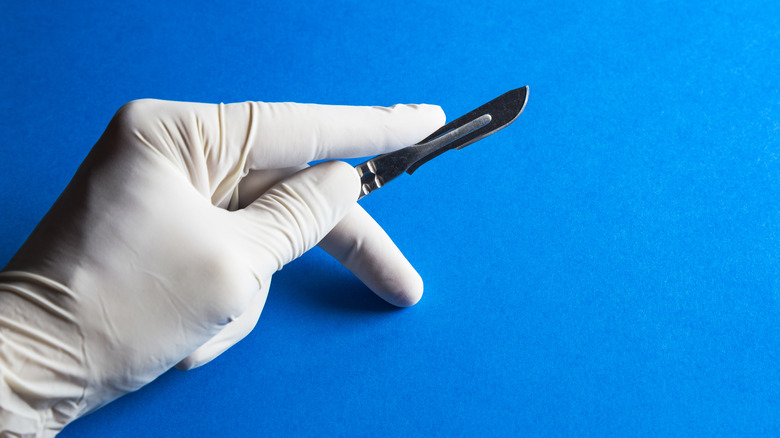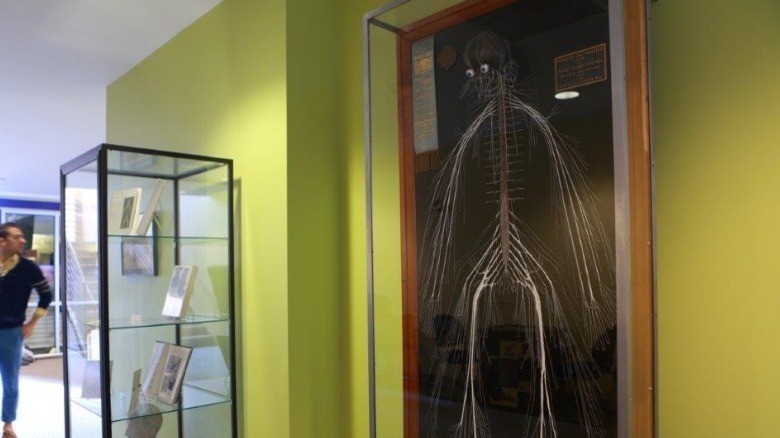Why A Hospital Cleaner's Nervous System Is Still Displayed At Drexel University
It's not unheard of for someone to donate their body to science after they've passed. The practice has been around for centuries, and it allows those in the medical field to improve their knowledge and gain new information about the workings of the human body. According to the JAMA Network, reports of the dissection of human cadavers dated back to the first half of the 17th century, but the demand for cadavers began in the mid-1800s. Back then, legally obtained cadavers used for studying anatomy were those of criminals who had been executed.
The Uniform Anatomical Gift Act was passed in 1968, and it outlines the rules and regulations regarding the donation of bodies, tissues, organs, and body parts for scientific purposes (via Organ Donation Alliance). There are many reasons why people choose to donate their bodies to science. Some want to donate to save lives, while others want to be an instrument in medical research. It's also worth mentioning that body donation is cheaper than the standard burial, as programs usually foot the bill for costs.
In the late 1800s, one woman reportedly decided to donate her body to medical science, and her name — or at least part of her body — remains famous in the field long after her death.
Who was Harriet Cole?
There isn't plenty of information available about Harriet Cole. According to ATI, she was an African-American woman who worked as a cleaning lady at the Homeopathic Hahnemann Medical College in Philadelphia (now known as the Drexel University College of Medicine). At the same time, an anatomy professor named Dr. Rufus Weaver worked in the college, and he performed human dissections in front of his students.
In 1888, Cole died of tuberculosis at the age of 35. It is said that prior to her death, she agreed to donate her body to Dr. Weaver for medical study. However, it isn't known why she decided to do it. As noted by Drexel University's Legacy Center, there is no proof that she did so, as the records may have been lost. What's confirmed is that there was a woman named Harriet Cole in the 1870 census, and her death certificate dated March 1888 lists death from tuberculosis and Hahnemann Medical College as the place of burial. Dr. Weaver put the cadaver to good use and achieved an incredible feat by dissecting the entire nervous system, which had never been done before. As reported by Past Medical History, the task took five to six months to complete, and Dr. Weaver called his work "Harriet."
Harriet Cole's nervous system remains at the university
There have been dissections of the nervous system prior to Dr. Rufus Weaver's work, but none of them displayed the entirety of the system. The work that Dr. Weaver did required precision, great attention to detail, and patience. The skeleton was chipped away little by little, and the eyeballs were kept intact. After preserving his work, Dr. Weaver used thousands of pins to attach the nervous system to a board to display his work (per Translational Research Anatomy). The doctor's work served as an instructional aid for his lectures, but in 1893, he brought Harriet to Chicago for the World's Columbian Exposition where he was awarded the Premium Scientific Award for his work.
The nervous system has been printed in countless medical books and instructional materials, and to this day, Harriet is still displayed at the Drexel University College of Medicine where it is protected by a glass enclosure in the Student Activities Center. Joanne Murray, the director of Drexel University's Legacy Center, said Dr. Weaver's work remains displayed, as it's a work of art and at the same time has educational value. People remain in awe of the intricacy of the human nervous system that they see on display. To date, there have only been three others who have successfully dissected a full human nervous system, as reported by Live Science.


